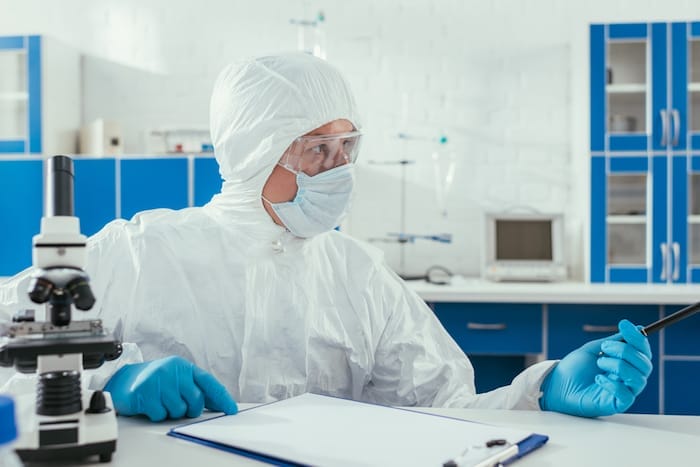
By Dijam Panigrahi
The Coronavirus pandemic has increased health manufacturers’ reliance and appetite for additional automation technologies. Industry analysts say many manufacturers are looking to make these investments to increase efficiencies but also to maintain production cycles because of fears of a growing second wave of the virus.
The increased planning and use of automation continues as a central focus and business strategy as health manufacturers ponder how to maintain operating amid lockdowns and social distancing. Everything from robotics, the Internet of Things (IoT), and virtual technologies are all being looked at or implemented.
These automation solutions are designed to enhance workforce training to reduce the time required to produce goods on the plant floor, leading to shorter industrial design cycles and lower production times.
COVID-19 Expedites Automation Needs
This has led to health manufacturers implementing more automation solutions while replacing older medical device assembly lines, subsequently identifying new production models and levels of efficiency. Furthermore, with a higher number of manufacturing employees and designers wary of getting sick from COVID-19, these technologies are increasingly getting implemented to either foster more social distancing or reducing the number of humans during training protocols and also required on the plant floor overall.
Approximately 80% of manufacturers fully expect COVID-19 to have a financial impact on their business, as reported in a recent study for the National Association of Manufacturers (NAM)1.
What’s more, the report1 also illustrated that many of these manufacturers (53%) believe the pandemic will impact their operations.
Healthcare and Device Manufacturers
AR-enabled glasses that display patient information are a great example of how AR can help healthcare organizations. Instead of relying on tablets and traditional terminals, many clinicians and physicians are looking to instead utilize a more hands-free approach. Medical device and technology manufacturers point to a variety of key benefits: assistance with IV placement and blood draws, gesture-based technology for recording files or accessing new information, portable ultrasound display and more.
Demand for these technologies will continue to grow, and a second wave of COVID-19 is looking to expedite the use of these hands-free technologies during the design and manufacture phase, as well as increased use from the physicians themselves.
The use of cloud technology for technologies such as AR/VR enables greater information sharing since designers outside the organization can research critical design and safety elements in other buildouts – a process that’s critically important during training.
Leveraging Cloud & Automation To Overcome Major Challenges
Manufacturers are overcoming these limitations by leveraging cloud-based (or remote server based) AR/VR platforms powered by distributed cloud architecture and 3D vision-based AI. These cloud platforms provide the desired performance and scalability to drive innovation in the industry at speed and scale.
Enterprise-grade high-quality AR/VR platforms require both performance and scale. However, existing systems such as MS HoloLens and others are severely limited in both aspects. Most enterprises have a rich repository of existing complex 3D CAD/CAM models created over the years. These 3D models may vary in their complexity (such as poly count, hierarchy, details, etc), making it difficult to run and excel within on-premise virtual platform environments, restricted by device limitations. This forces developers to decimate the contents (3D models/scenes) to fit to different mobile devices, spending months in the process and sacrificing on the overall quality of the experience.
As these virtual environments become richer and larger, the problem continues to compound. This cycle is repeated for each of the different AR/VR hardware platforms, making it difficult for any enterprise to move from experiments and pilots to full scale deployable solutions, thus stunting the speed of innovation and effectiveness
The device limitations also severely restrict the capability of existing AR/VR systems to generate and work with very fine mesh with large polygon count models and point clouds, which is essential to collocate and precisely fuse the virtual objects on top of physical objects in the real world with complex surfaces, and varied lighting and environment.
Manufacturers are overcoming this great challenge by leveraging AR/VR platforms powered by distributed cloud architecture and 3D vision-based AI. These AR/VR cloud platforms provide the desired performance, accuracy and scalability to drive innovation in the industry at speed and scale.
Manufacturers today are experiencing the next wave of technology innovation that will fundamentally alter the way they operate. This transformation is primarily driven by merging of the digital and physical world to create a better, smarter and more efficient way of operating. Immersive technologies such as AR/VR technologies are playing a pivotal role in this transformation. The organizations that take a leadership role will be the ones that not only leverage these technologies, but they will partner with the right technology provider to help scale appropriately without having to stunt technological growth.
About The Author: Dijam Panigrahi is Co-founder and COO of Grid Raster Inc., a leading provider of cloud-based AR/VR platforms that power compelling high quality AR/VR experiences on mobile devices for enterprises. For more information please visit www.gridraster.com.
1: https://www.nam.org/coronasurvey/
The Editorial Team at Healthcare Business Today is made up of skilled healthcare writers and experts, led by our managing editor, Daniel Casciato, who has over 25 years of experience in healthcare writing. Since 1998, we have produced compelling and informative content for numerous publications, establishing ourselves as a trusted resource for health and wellness information. We offer readers access to fresh health, medicine, science, and technology developments and the latest in patient news, emphasizing how these developments affect our lives.








